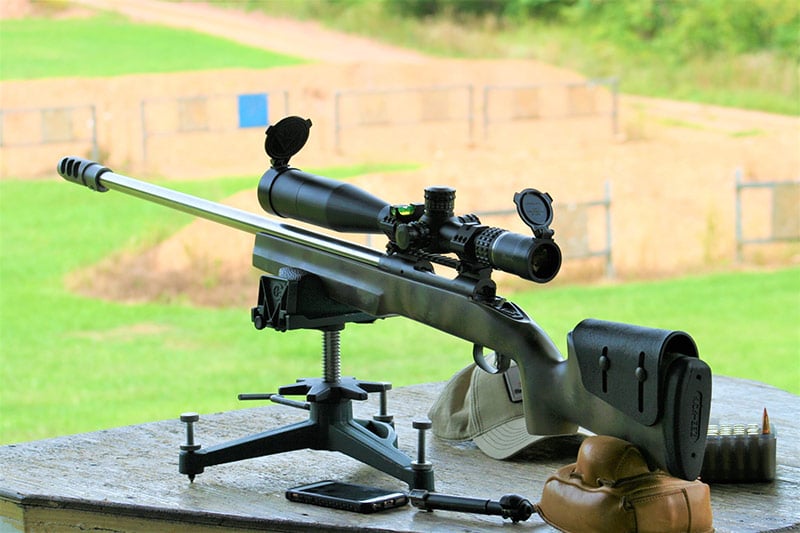
(Photo: Jeromy Knepp)
With the explosion of long-range competition comes a need for quality rifles with pinpoint accuracy. From 3-Gun to PRS, Silhouette to Extreme Long Range there are now countless competitive matches designed to allow shooters to hone and test their precision with a gun.
As any gun enthusiast and builder knows, a sturdy structure proves paramount and rifle companies have answered that call for solid foundations; but the gear you choose to trick out and top that rifle is just as important as the gun itself. That’s why Guns.com is help to you in your quest for competition.
1. Accessories
There are a vast array of accessories on the market today for firearms — from stocks to muzzle brakes to flashlights, lasers and handguards. Before you trick out the rifle with all the goods, first read the rules of your discipline. Some limit the kind of accessories and it’s important to know what you can and can’t use before arriving on game day.
Aftermarket stocks are a great place to start when upgrading the rifle. There are a variety of types to choose from with a trending item right now being aluminum machined chassis systems from MDT, JP Enterprise and XLR Industries. If a more traditional style is desired Manners, Stockade Stocks, McMillan and Bell & Carlson all have designs to fit that classic vibe. Whichever stock competitors choose, it should meet the demands of your chosen discipline.
Other popular upgrades that prove beneficial for long-range competition shooting include lightweight aluminum and carbon fiber bipods, support bags and shooting sticks, adjustable front rests for benchrest shooting and a good heavy rear bag that fits the contour of the stock.
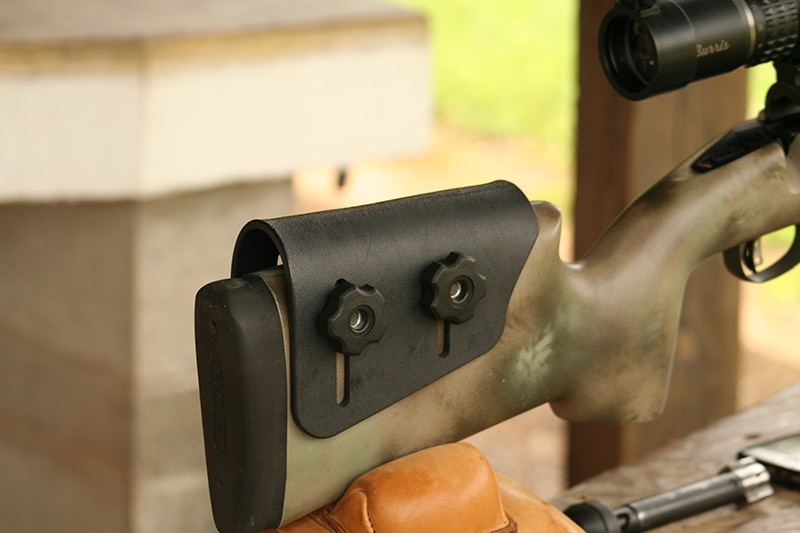
Accessories like a cheek riser make shooting more comfortable which can impact accuracy and precision. (Photo: Jeromy Knepp)
Additionally, shooters should consider installing aftermarket triggers into the rifle builds. Aftermarket triggers work great to achieve accuracy and consistency while shooting. For those already at the end of their budget with no extra room to spring for an expensive aftermarket trigger, gunsmiths are a solution. Gunsmiths can often smooth and lighten factory triggers for a fraction of the cost of an aftermarket trigger.
For non-mounted rifle accessories, a sturdy 65 to 80 mm objective lens spotting scopes provide great insight into shot placement. Handheld weather stations, like the Kestrel 4500, are also great to have on hand as they provide onsite weather information essential for ballistics. These clever devices even come equipped with Bluetooth to allow connection with smartphones. While we’re on the topic of smartphones, ballistic apps are another great non-rifle mounted accessory to help provide firing solutions. Using apps by Applied Ballistics, Hornady and Shooter offer calculations to improve accuracy.
2. Optics
In preparation for competition, shooters must first decide on the optic. Optics largely depend on which shooting discipline gunners are competing as magnification range will play a part in selecting a specific model optic. Marksmen most often choose a variable power scope over a single power scope. Variable power scopes are useful on days with heavy mirage or short distance targets.
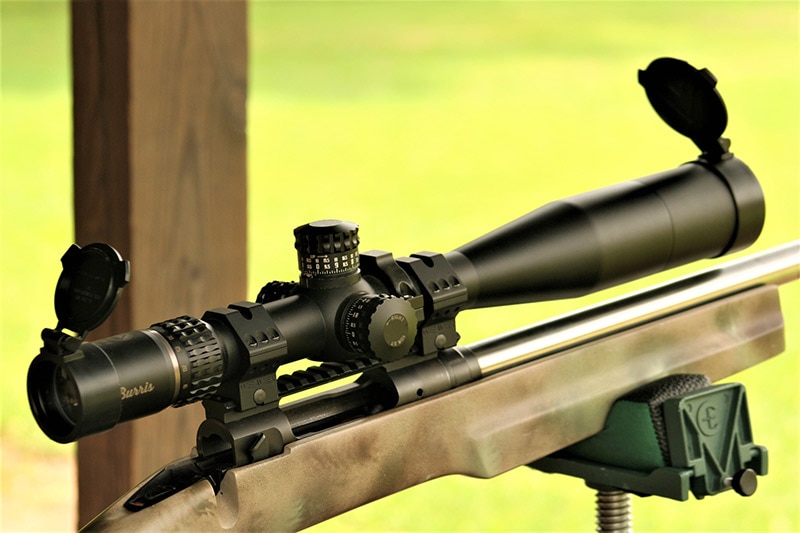
A good scope is worth the price. (Photo: Jeromy Knepp)
The reticule choice is another variable competition shooters must consider before tossing on an optic. Etched ballistic reticules in the first focal plane are great for ranging targets quickly and using accurate holdover. Meanwhile standard second focal plane scopes work well for static shooting like benchrest or varmint hunting. Second focal plane scopes set to the ranging power number also benefit from a good ballistic reticule that coincides with the unit measurement of the turrets. Riton Optics, Leupold, Vortex, Bushnell and Nightforce are all standards in long-range competition. Good, solid scopes are not budget-friendly; but “buy once, cry once” and purchase as much riflescope as you can afford.
Remember that items like an anti-cant level will help to keep things lined up while quality scope rings help hold that optic tight. Finally, mounting a canted Picatinny rail with 10 to 20MOA of slope will help give needed elevation.
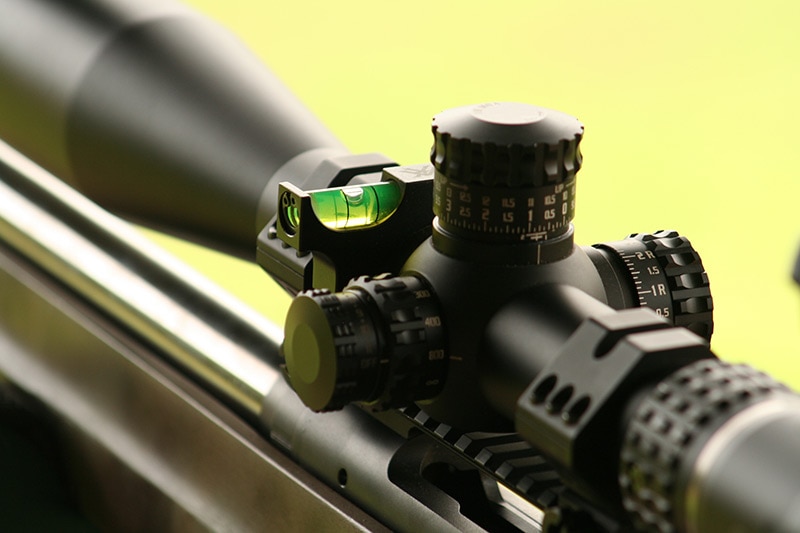
Anti-cant levels ensure everything is level. (Photo: Jeromy Knepp)
3. Ammunition
Whether hunting or target shooting, great consideration should be given to ammunition as choosing the right cartridge is paramount in achieving your end goal. It’s important to consider the Ballistic Coefficient of a cartridge. BC, in the simplest terms, determines how well a bullet cuts through air while remaining stable. Stability is key when shooting long-range so choosing a heavy caliber sporting a high BC often proves beneficial.
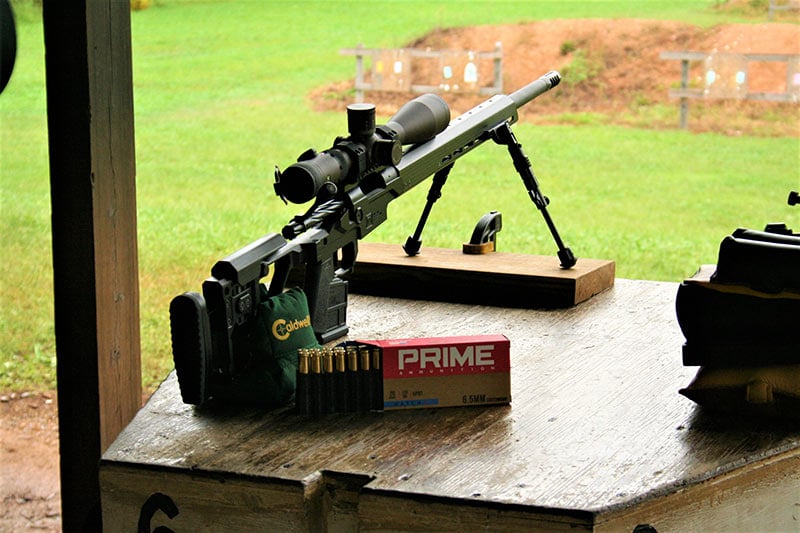
Ammunition can also impact accuracy. (Photo: Jeromy Knepp)
For this reason, many competitive shooters may choose to hand load for optimum performance; however, it’s not always a necessity especially if you’re dipping your toes into the competitive shooting arena. Many ammunition manufacturers like Black Hills, Hornady and Federal offer high-quality ammunition for competitive shooting.
Final Thoughts
Whether you opt for an AR platform rifle or bolt action rifle, when it comes to tricking out your build, the best advice is to purchase the quality equipment – either by buying all at once or building slowly to suit your needs. Additionally, all the gear in the world won’t help performance if shooters don’t actually get to the range and practice, practice, practice! Fundamentals like trigger squeeze, breath control, proper head alignment and cheek weld partnered with learning to read wind speed and direction are all important factors for match-winning results. Whatever competition you enroll in next, enjoy the journey.
CHECK OUT RIFLES FOR COMPETITION AT GUNS.COM
The post How to Trick Out Your Rifle for Long Range Competition appeared first on Guns.com.
